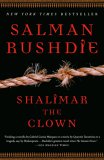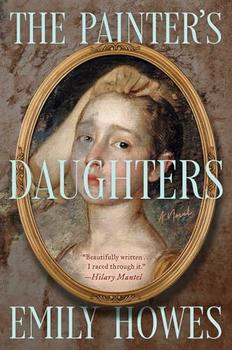Reading Guide Questions

Please be aware that this discussion guide will contain spoilers!
- Several characters in Shalimar the Clown are known by
two or more names: Shalimar/Noman Sher Noman; Boonyi/Bhoomi; India/Kashmira;
Peggy /“The Grey Rat.” What is the significance of these multiple names?
What is the relationship between given names and nicknames or names that
characters choose for themselves?
- The novel presents many examples of different types of
magic, some more potent than others: Olga Volga’s potato magic;
Nazarebaddoor’s ability to see into the future; Firdaus’s snake charms; the
Seventh Sarkar’s attempt to make an entire garden vanish. Why do so many
characters believe in and rely on magic? Is the reader meant to believe that
their magic is real? Does it need to be real in order to have effect?
- Nazarebaddor and General Kachhwaha are blessed (or cursed)
with the abilities of perfect foresight and perfect memory, respectively.
Whose gift is more powerful/valuable? Why do both characters end up
suffering because of their talents? What is Rushdie trying to say about the
nature of the past and the future?
- Rushdie portrays love as a profound, complex, potentially
dangerous emotion. In the world of this novel, does true love exist? Or is
love negated by distrust and infidelity? Is love inherently impassioned and
therefore volatile, or can it be untroubled?
- As represented by the Banquet of the Thirty-Six Courses
Minimum, the acts of preparing and consuming food stand as symbols of
tradition, wealth, and power. How does Rushdie achieve this effect? What
does it say about the people of Pachigam and Shirmal? Discuss the psychology
of Boonyi’s addiction to food while she is living in New Delhi.
- At the beginning of the “Boonyi” chapter, young Shalimar
learns about the shadow planets, Rahu and Ketu, which, we are told, “existed
without actually existing” and were able to “bend destiny to their will.” Do
these otherworldly phenomena assert themselves in this world? If so, who
seems the most affected by these forces?
- How does the story of Max’s heroism in Europe during the
1930s and 40s connect to later events in Kashmir and Los Angeles? How, if at
all, does World War II differ from India and Pakistan’s struggle for Kashmir
or the assault on the West by Islamic terrorists? Is Rushdie saying that
there are the universal characteristics of war? Does he think that peace is
ever possible?
- The novel presents many variations on the idea of
family–traditional nuclear families, broken families, adoptive families,
multicultural families. How do the circumstances of each character’s
upbringing determine or shape his or her future? Is heritage destiny?
- Rushdie describes Los Angeles as a “decentered promiscuous
sprawl,” “a hidden city, a city of strangers,” a “veiled and difficult
place,” the “erotic capital of the obscure stratagem.” Compare this
depiction of the city with the structure of the novel itself, with its
multiple locations and shifting perspectives. Why did Rushdie choose to
organize the story in this way?
- What is the relationship between repentance and forgiveness
in the novel? Why can unrepentant Max be forgiven by his daughter while
Shalimar cannot forgive repentant Boonyi?
- Despite differences in culture, language, and location, the
characters find means of communicating with each other. What are some of the
ways in which they do this? Is their communication strictly verbal? What is
the purpose of communication for characters so fiercely driven by and
devoted to their own ambitions?
- Play-acting, or assuming a persona, is a motif throughout
the text. Abdullah is an actor, Shalimar a circus performer, Max an
undercover agent. How does this professional misrepresentation affect the
characters’ private lives?
- Considering the actions and fates of the characters in
Shalimar the Clown, is revenge ever justifiable? How is Shalimar’s quest
for vengeance different from India’s? Do they accomplish what they had hoped
to?
- At the end of the novel, does India kill Shalimar? Why are
the final passages cryptic? Does the author view the future as
predetermined, or is it possible to break the cycle?
Unless otherwise stated, this discussion guide is reprinted with the permission of Random House.
Any page references refer to a USA edition of the book, usually the trade paperback version, and may vary in other editions.

 Book Reviewed by:
Book Reviewed by:


